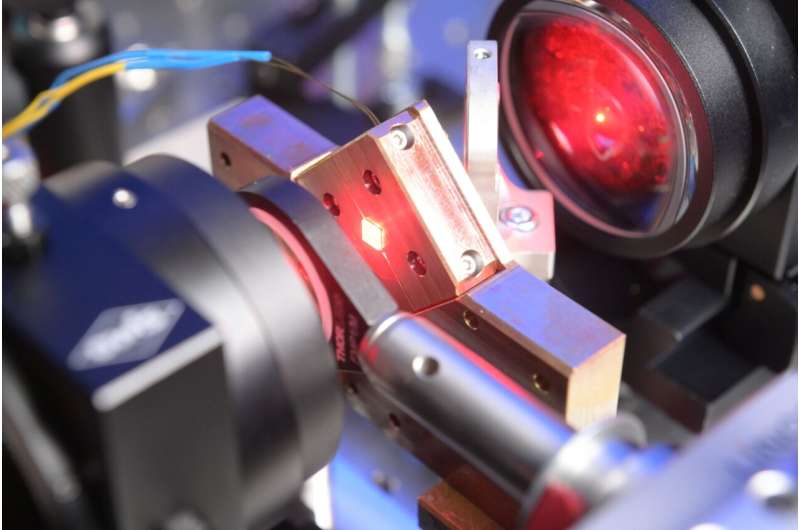
Alexandrite laser crystals are well suited for use in Earth observation satellites. They are robust and enable laser systems with a tunable output wavelength. In the European Horizon 2020 project GALACTIC, the partners Laser Zentrum Hannover e.V. (LZH), Optomaterials S.r.l. (Italy) and Altechna (Lithuania) have now succeeded in establishing a solely European supply chain for alexandrite laser crystals, which can be used for space applications.
The Italian partner Optomaterials produces competitive crystals, which the Lithuanian company Altechna provides with a special coating. To achieve the necessary properties for space-applications, Altechna has developed special coating designs and processes based on ion beam and magnetron sputtering processes.
Proven: Space suitability
Scientists at the LZH thoroughly tested the crystals in special laser systems. They have designed these systems with future applications in mind. The demonstrators could lay the foundation for new laser-based measuring instruments. The LZH’s scientists exposed the Alexandrite crystals to proton and gamma radiation and ran them through several temperature cycles typical for space applications.
Before and after these environmental tests, they have characterized the crystals in terms of their transmission properties and laser performance, among other things. Since the environmental tests did not significantly change the measured parameters, the space suitability could be demonstrated. In addition, the researchers showed that the laser-induced damage threshold (LIDT) of the crystals is equal to—or even exceeds—top products on the world market.
The GALACTIC team has thus successfully raised the Technology Readiness Level (TRL) of space-qualified alexandrite crystals from Europe from 4 to 6 and have made the crystals ready for the market.
Special properties for more precise data
Alexandrite crystals have very good thermal conductivity and fracture strength. Therefore, they are suitable for use in high power laser systems and are robust enough to withstand the harsh conditions in space.
Since the crystals can be used to tune the output wavelength of laser systems, they could form the basis of new types of laser-based measuring instruments for Earth observation satellites. Such instruments could be used to collect more precise climate-relevant data on the state of the atmosphere or vegetation.
The findings are published in the journal Optics Express.
More information: S. Unland et al, High-performance cavity-dumped Q-switched Alexandrite laser CW diode-pumped in double-pass configuration, Optics Express (2022). DOI: 10.1364/OE.478628
Journal information: Optics Express
Provided by Laser Zentrum Hannover e.V.

